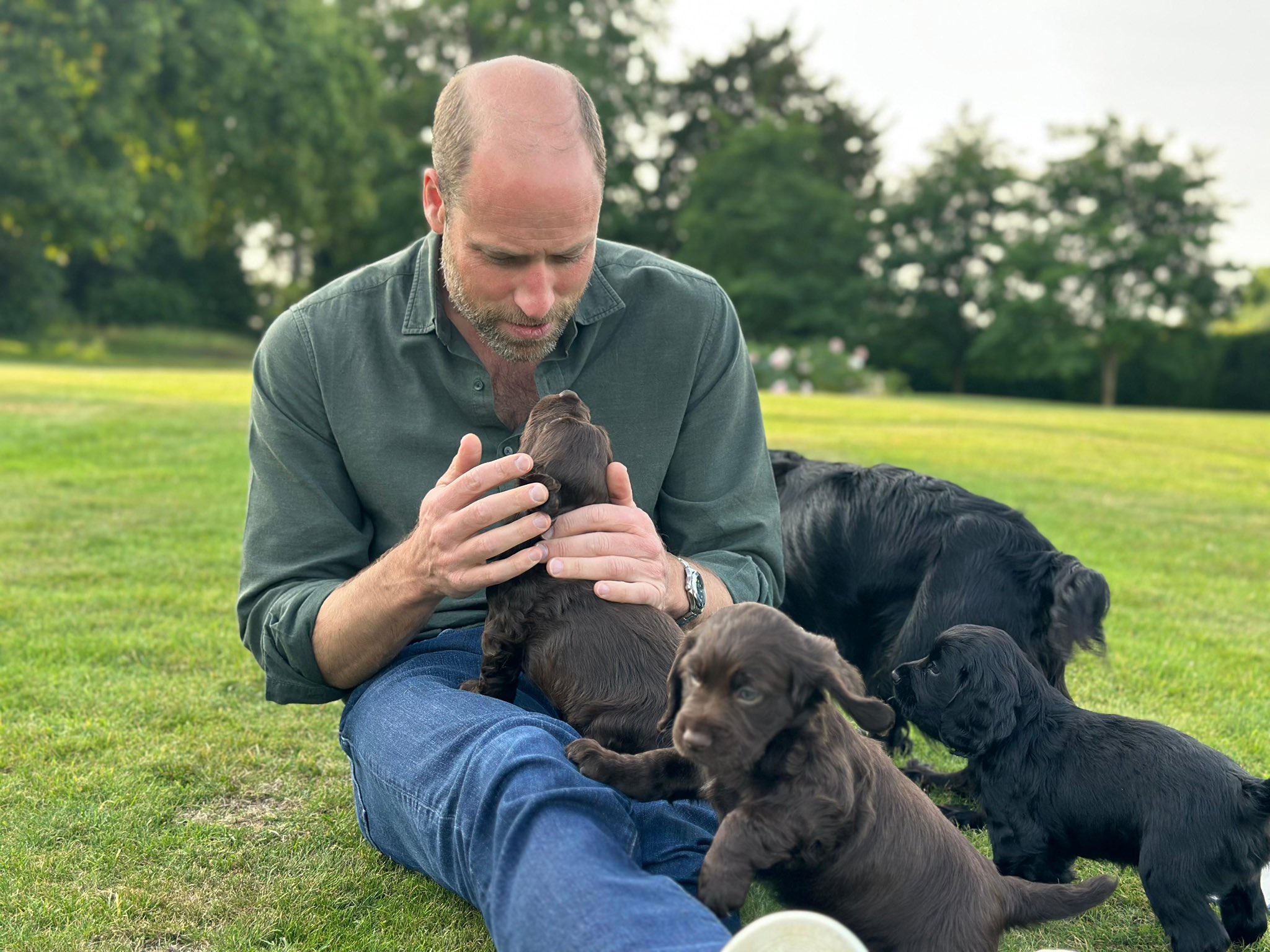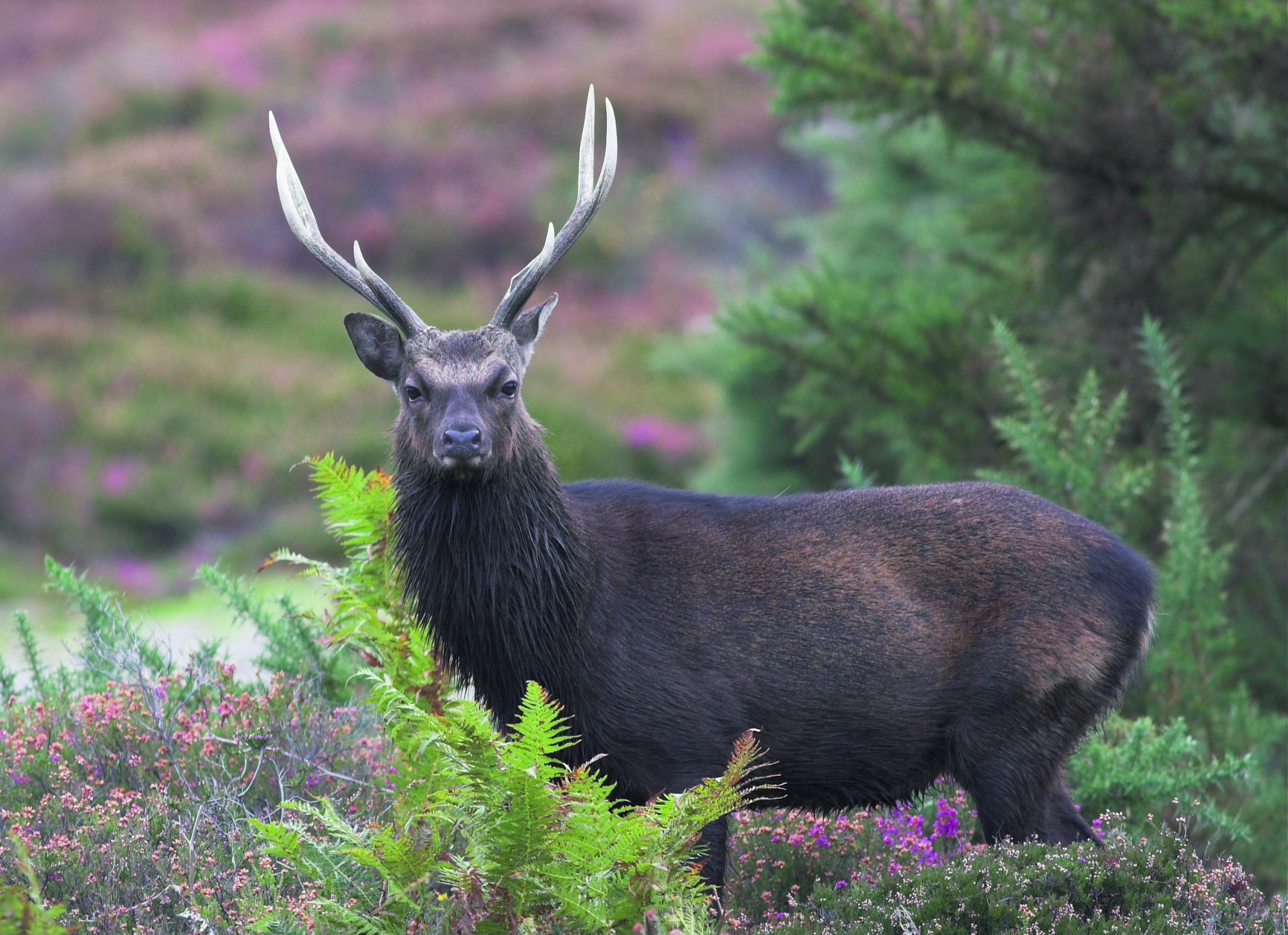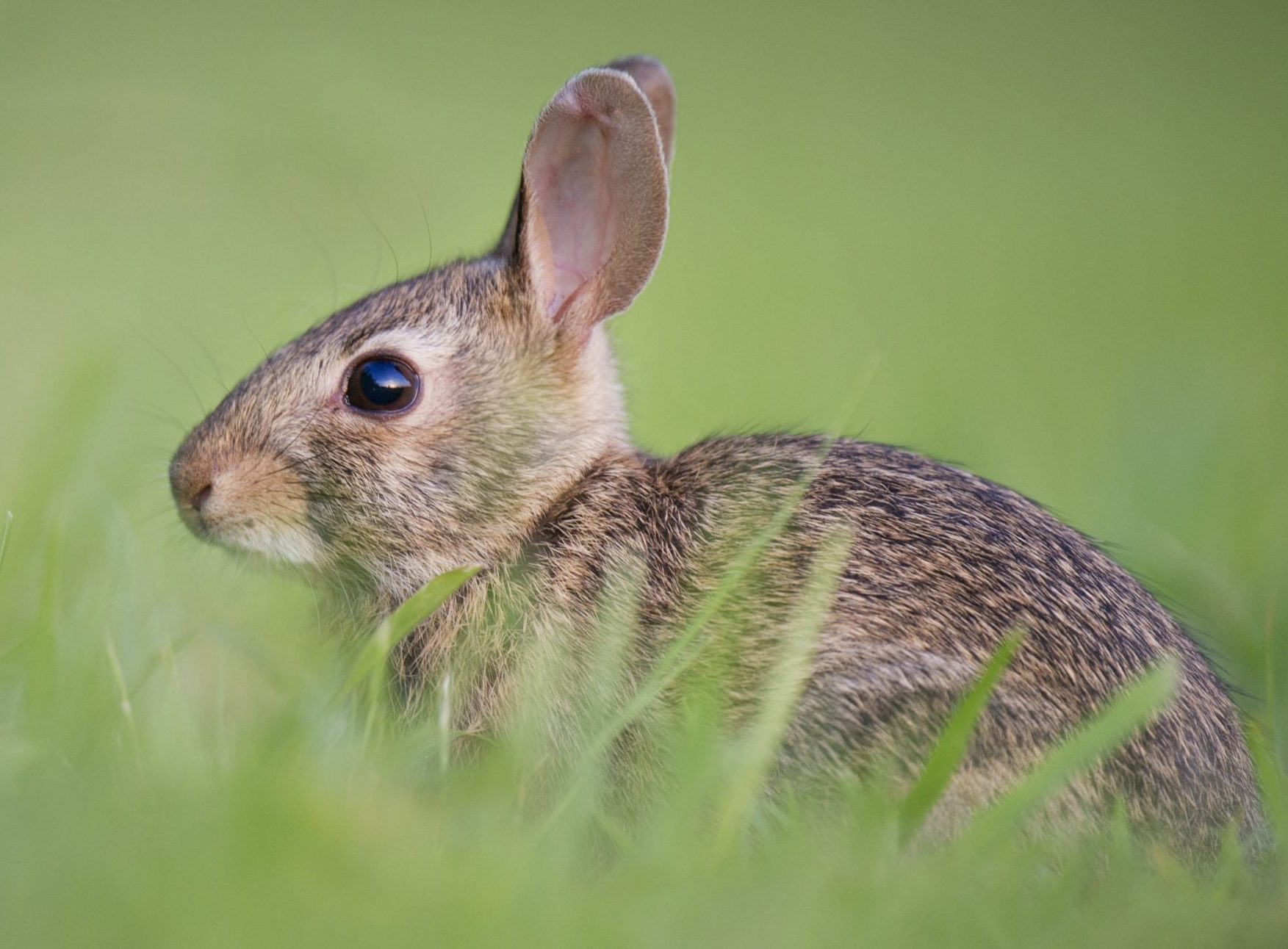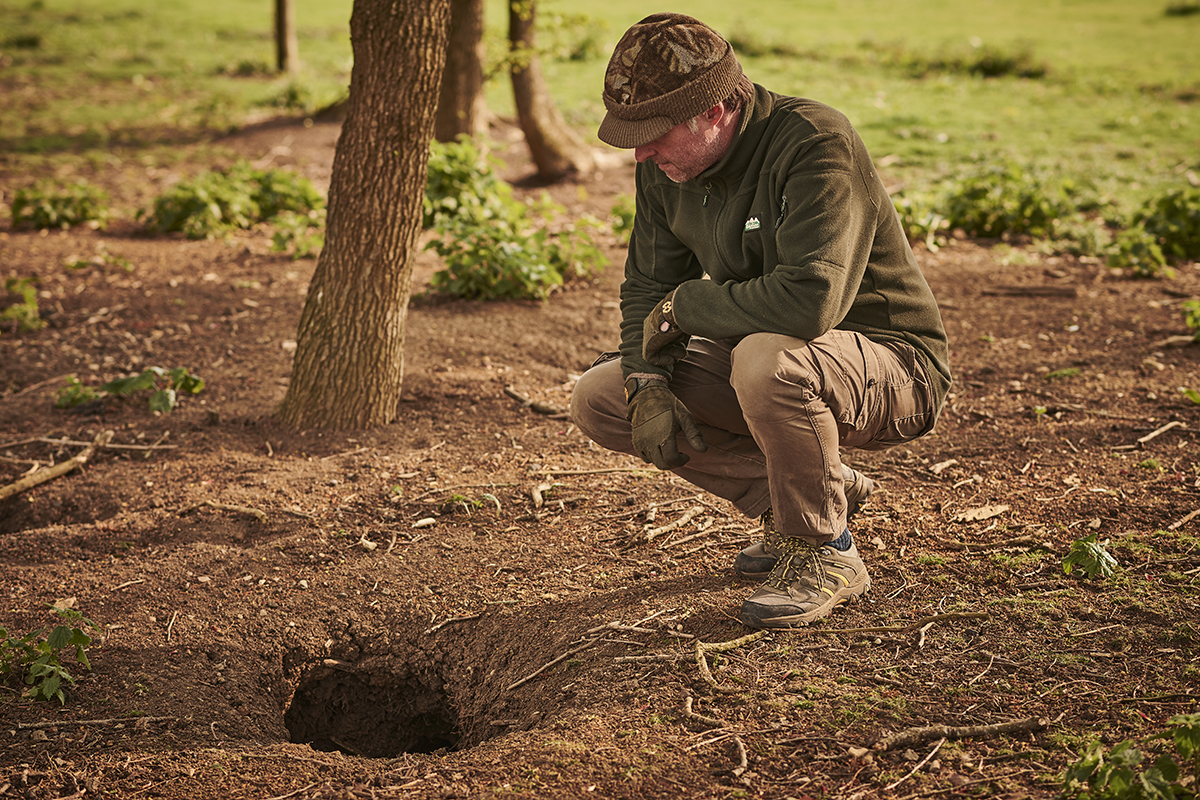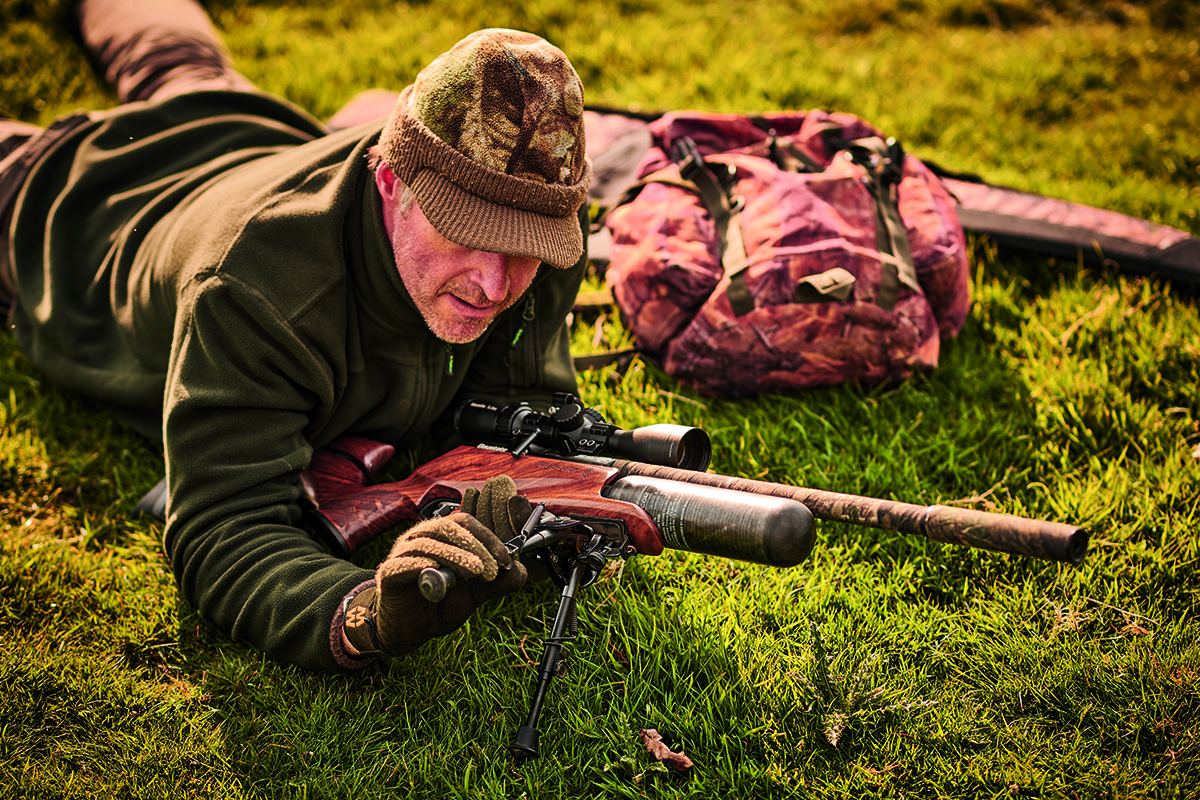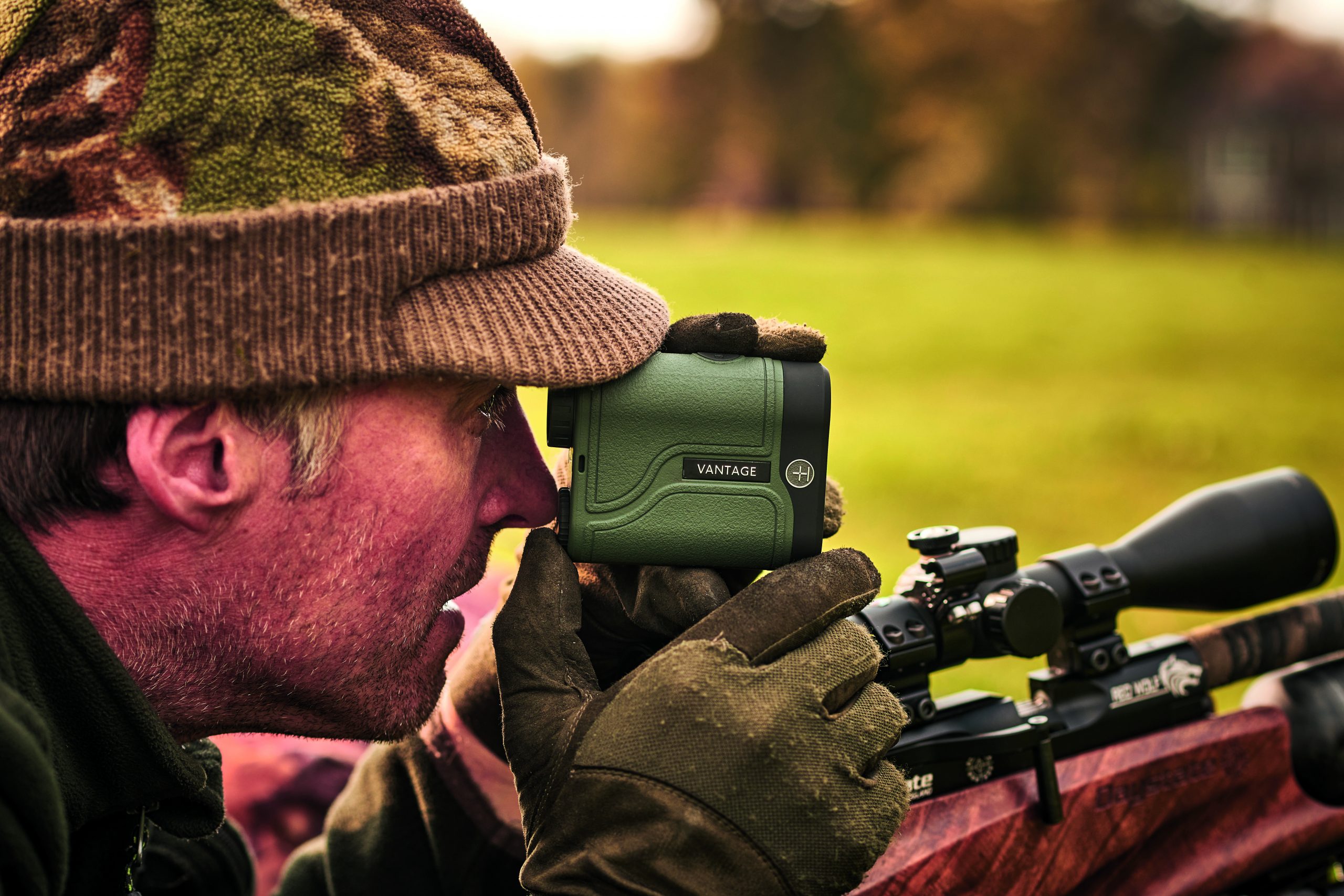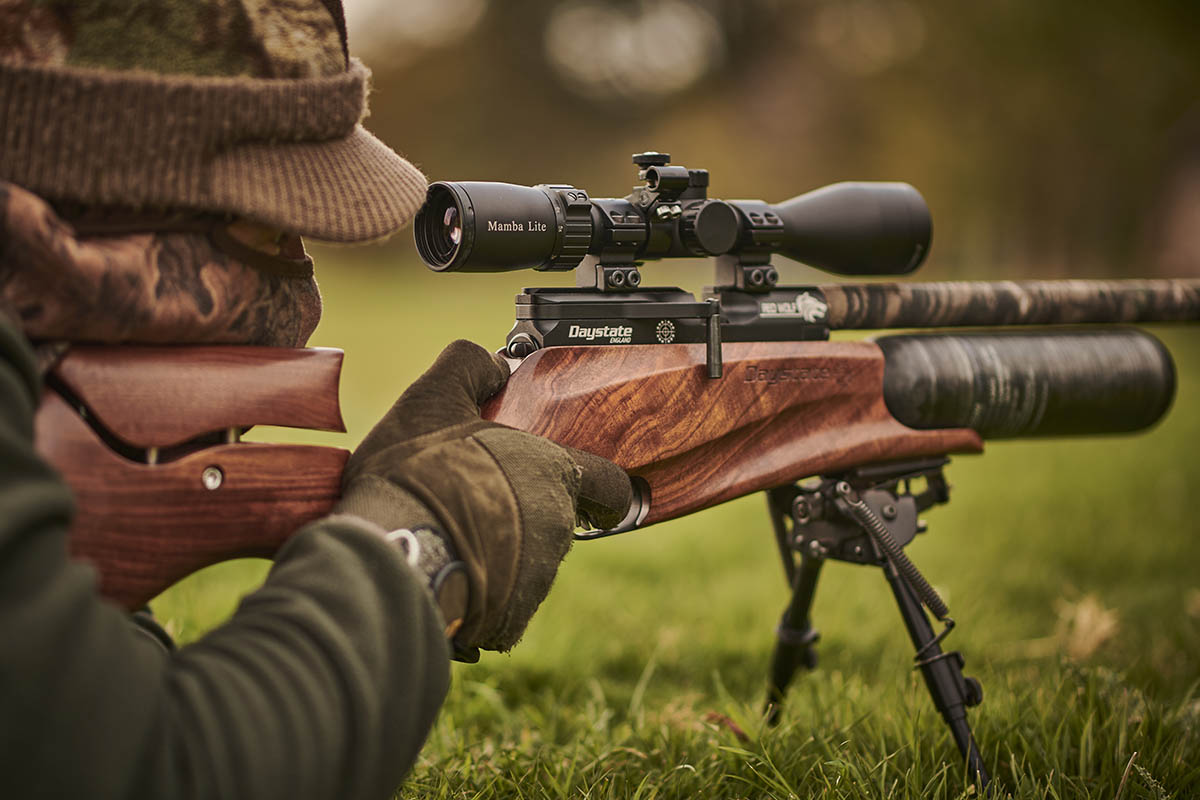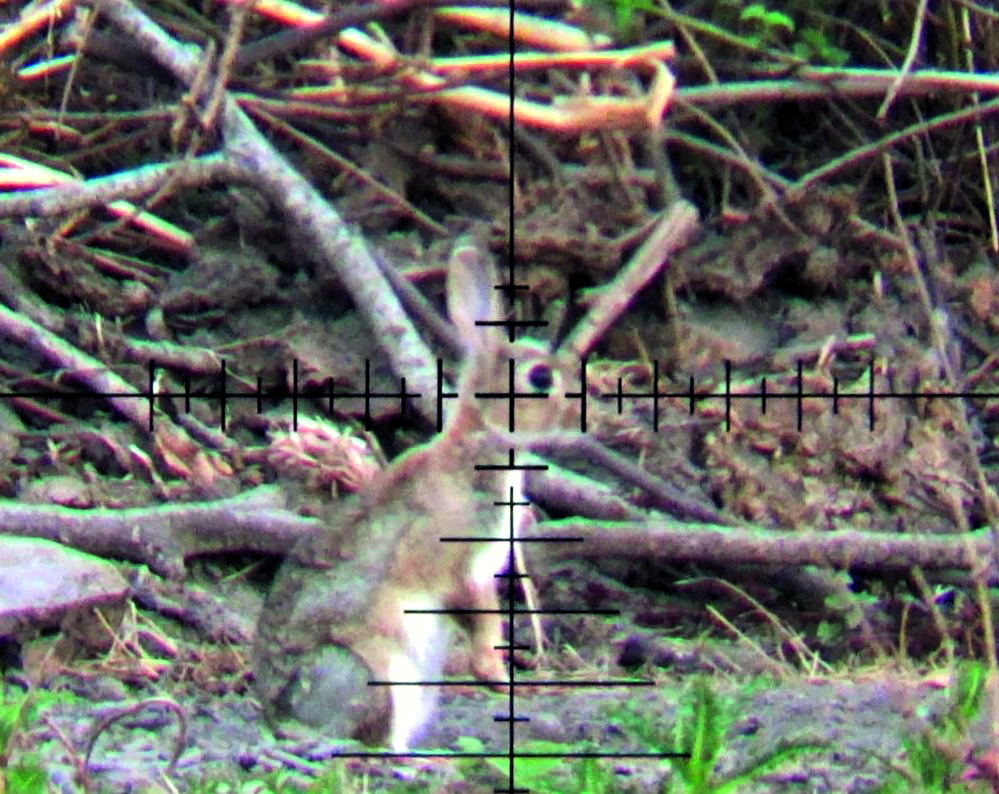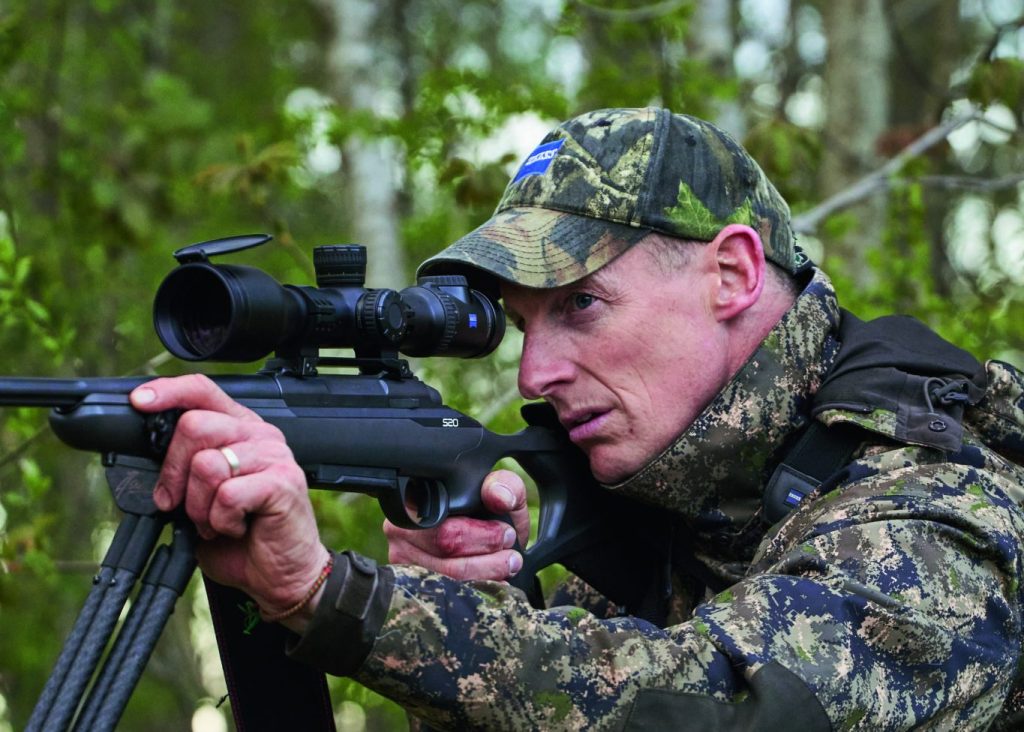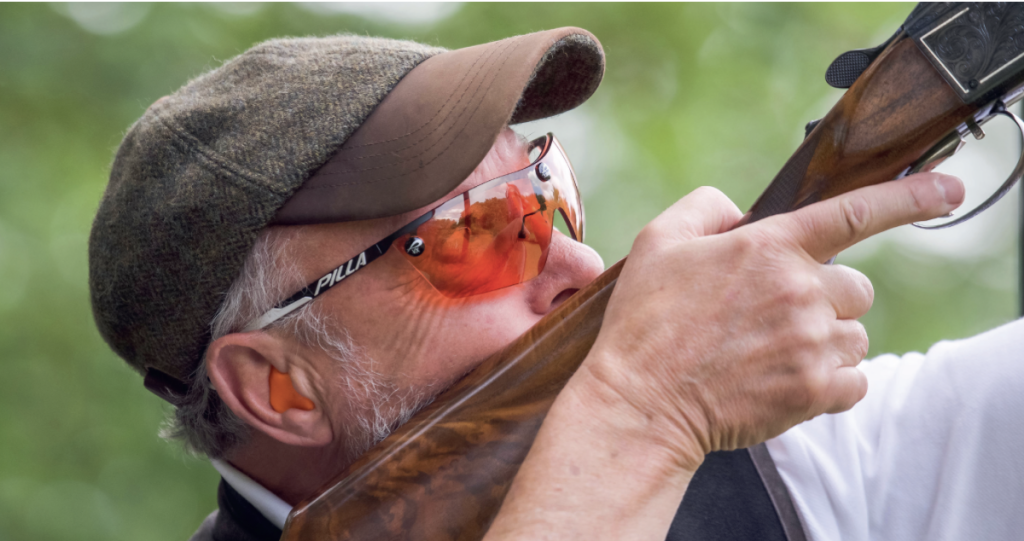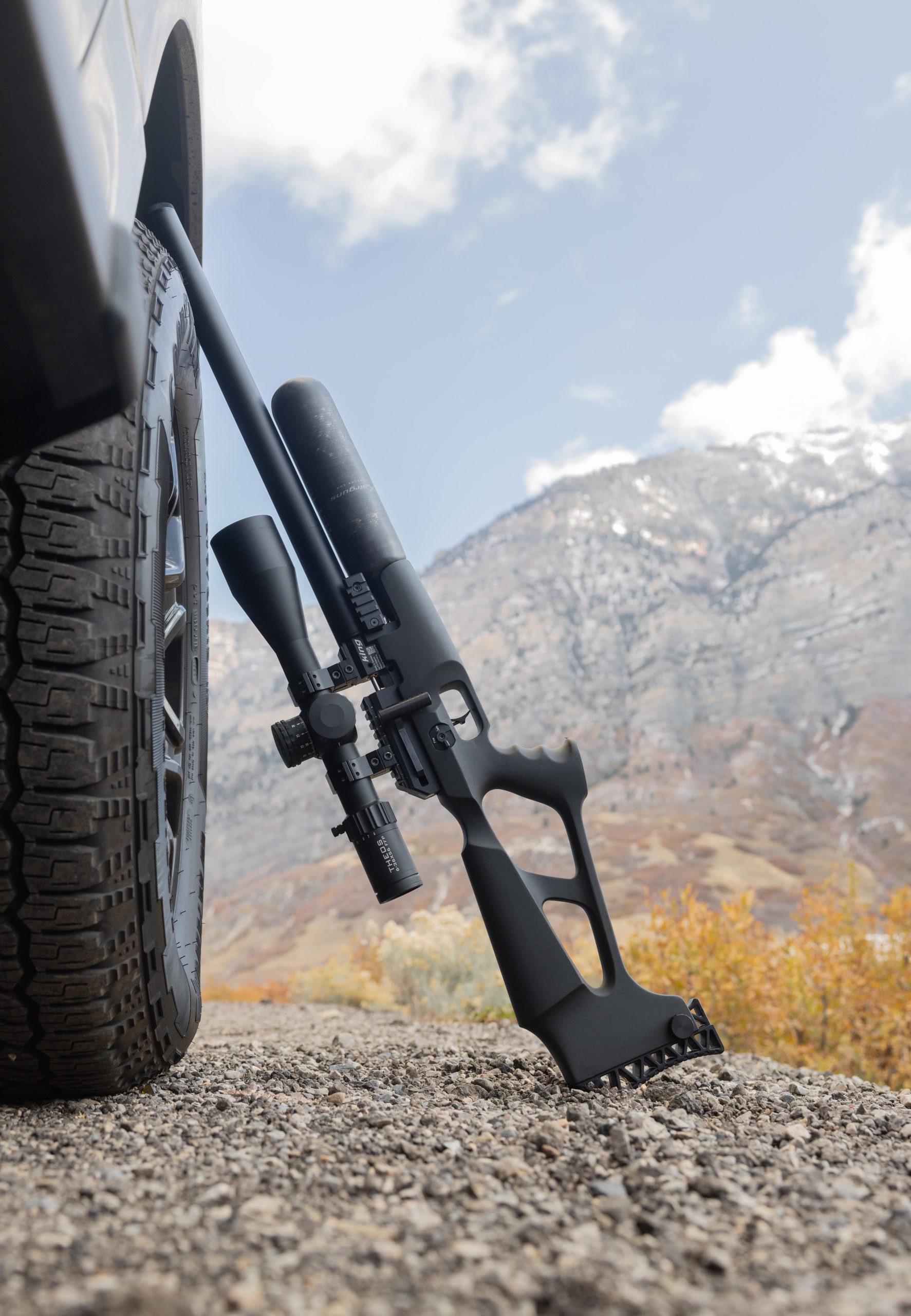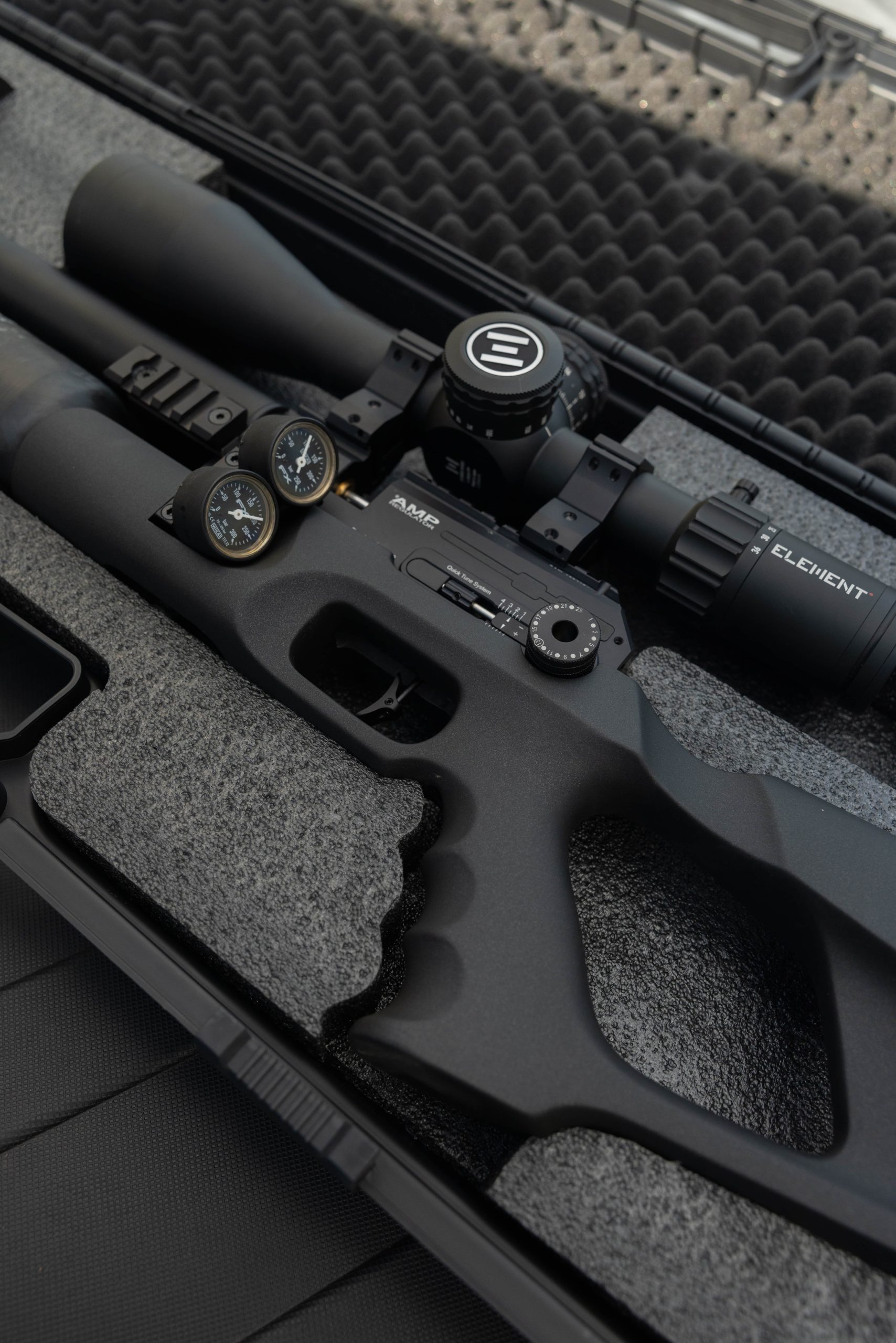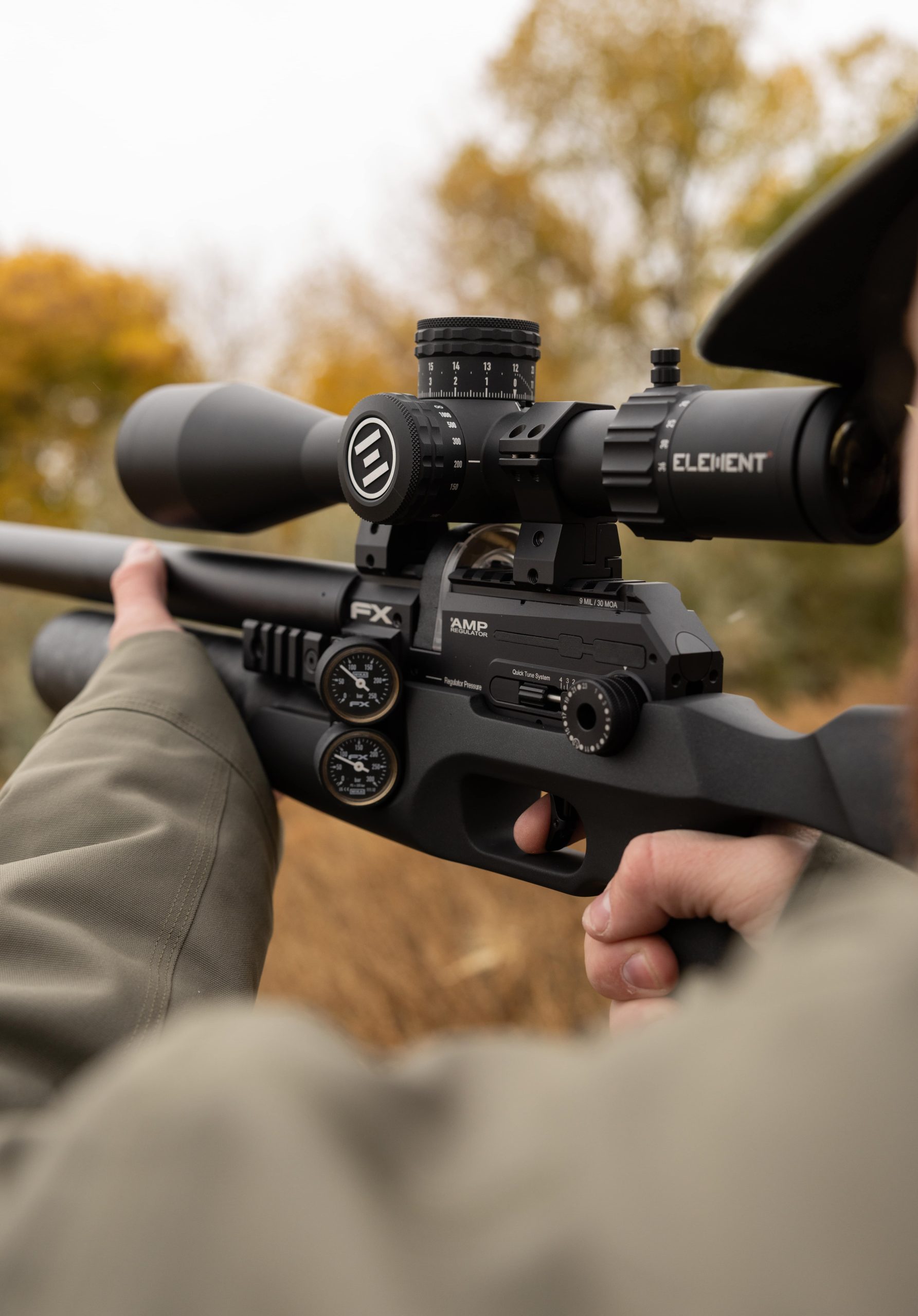Airgun news
Airguns
Shooting
Rabbiting using a bipod setup
Would you like to speak to our readers? We offer sponsored articles and advertising to put you in front of our audience. Find out more.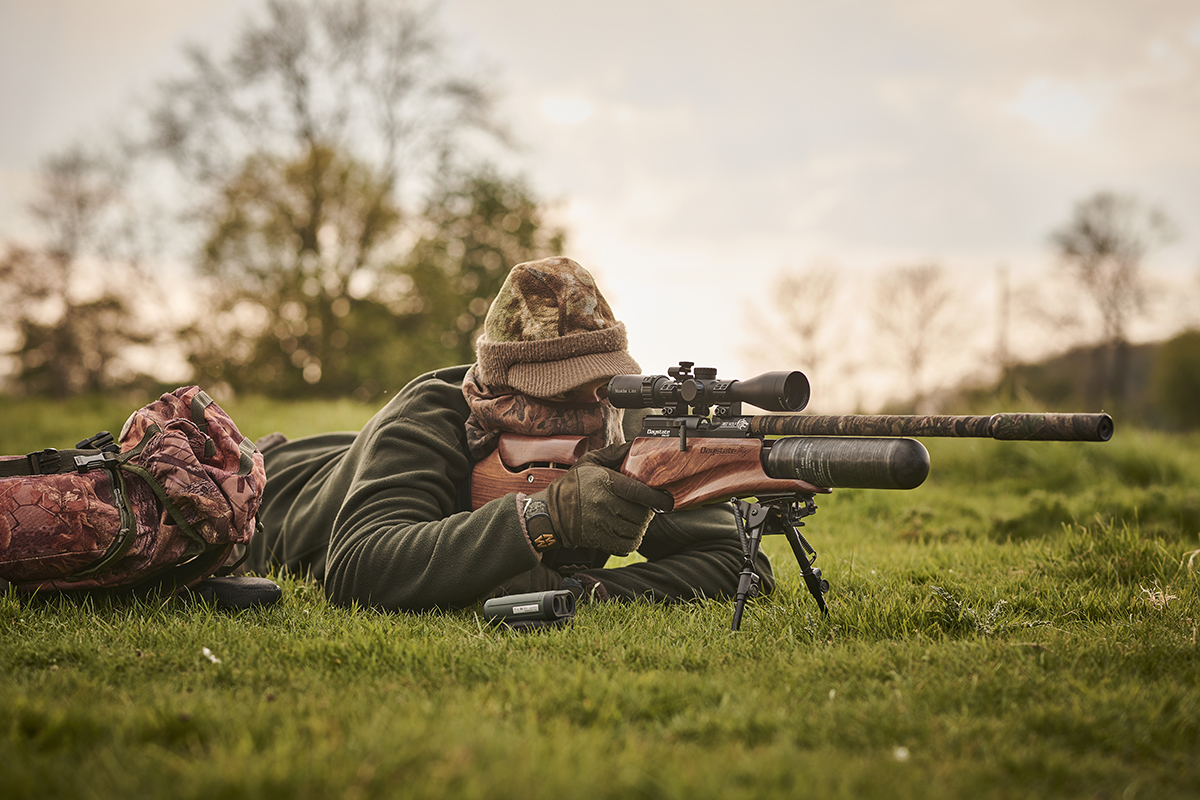 Countryman Prone Rabbit Control With Daystate Red wolf
Countryman Prone Rabbit Control With Daystate Red wolf
I wrote in the previous issue that rabbits were making a welcome return to the countryside where I live in the South West of England. Although it is heartening to see numbers of this mammal bouncing back after several years of rapid decline due to viral haemorrhagic disease, rabbits are still an agricultural pest and cause serious and costly damage.
Where the rabbits have made their strongest return, numbers are now as high as I can recall them being for the past 20 or so years, and their sudden abundance is a major concern. Apart from the expense of their consumption of grass that is grown for livestock grazing, the rabbits’ extensive burrowing has become dangerous. Although the landowner was initially happy to see the bunnies making a comeback and therefore permitted only very light shooting during their recovery, he is now rightly of the opinion that more needs to be done to keep them in check.
My initial outings back in mid-spring were geared more towards reconnaissance than shooting, although I did bag quite a few. These roving forays enabled me to cover plenty of ground in order to find out where the rabbits were most active.
Armed with that knowledge, I am now using a more static approach to optimise my efforts by focusing on one area at a time. Shooting from the prone position while using the support of a bipod to stabilise my shots and increase my effective range should hopefully result in more bunnies in the bag.
The quarry: rabbit
PEST STATUS: This burrowing rodent undermines banks and field margins, eating grass, cereal and vegetable crops. It also causes damage to lawns and golf courses.
HABITAT: An animal of the open countryside, rabbits usually establish their burrows on hillsides and embankments.
ADDITIONAL INFORMATION: Rabbits are liable to breed very quickly, and their meat is also good to eat.
19:10 – serious damage
Rabbits are able to breed extremely quickly. Peak breeding season runs from late winter right through to the end of summer. A 30-day gestation period and the tendency to have several litters of four to eight kits during the warmer months can quickly result in a serious population explosion, and large numbers of rabbits can be very destructive.
Much of this holding is managed as grassland for cattle and sheep grazing, and hordes of rabbits can quickly munch a costly dent into the crop. This is a concern to the landowner, although the rabbits have also been nibbling young trees and, most worryingly, undermining fields with their burrows.
Rabbit holes may not sound like a serious problem but they can be very dangerous to livestock, and it is not uncommon for cattle, horses and ponies to suffer broken legs as a result of placing a hoof down a burrow. The sudden explosion of rabbits on this farm has seen a massive increase in their excavations, which are so extensive around some field margins as to render them unsafe for farm vehicles to operate.
A quick look around one of the problem areas gives Mat a very clear picture of the damage being caused. There are lots of rabbits grazing on the field, and the land around the boundaries is pitted with earthworks – some of the burrows are huge and the soil kicked out by digging rabbits has created large mounds.
9:20 – gearing up
It is a fairly breezy evening, so Mat has opted to use his FAC-rated Daystate Red Wolf. Although he doesn’t intend to take shots at extreme range, the extra grunt of a high-powered air rifle will help drive the pellets through the wind, reducing drift and making aim-off more predictable.
The Red Wolf has adjustable power and Mat usually runs his at around 30 ft-lb. At this level, the gun remains relatively quiet and free from muzzle flip, while still giving Mat the advantage of increased power.
Although there are already rabbits out, Mat doesn’t want to risk spooking them all at once by taking a shot now. Instead, he walks to his chosen spot, hoping that the rabbits will think he poses no more danger than an approaching walker. He will then pick them off one at a time as they venture back out.
The key accessory for today’s outing is a bipod, and Mat favours a Harris design with adjustable legs and a swivel top that enables him to keep his shots free from cant even if the bipod isn’t set dead level.
The extra support of a bipod really helps when it comes to holding a steady aim on target. Taking stable shots is always an important consideration, but it is even more of a priority when there is a breeze to contend with, and it means that Mat will have one less thing to worry about when placing his shots.
19:25 – getting set
Apart from making for very stable shots, shooting from the prone position is also a great way to improve concealment. Getting down on your belly helps to keep your silhouette off the skyline, making it harder for quarry to spot you – even when natural cover is sparse.
Mat wants to keep his activity to an absolute minimum when the rabbits venture back above ground. Even very small movements can catch a wary rabbit’s eye or create noises that will put skittish quarry on edge.
In order to avoid having to move too much when chances arise, Mat is checking his ranges now. He has set up about 30m from the edge of the cover where the rabbits are burrowing, and also expects shots to present themselves away to his left and right. Given the breeze, he doesn’t plan to shoot at ranges greater than 45m this evening – even with his FAC-rated Red Wolf.
Mat uses his laser rangefinder to confirm the distance to several markers along the hedgerow. These include trees, fence posts and a cattle trough. When rabbits come out, he will be able to gauge the range by their proximity to these markers and then calculate the correct aim-off for his shots without having to reach for the rangefinder again.
19:35 – rapid action
You usually have to be patient to get the best results from an ambush. Whatever quarry you are targeting, it is likely that your arrival will scare it away, which means you will have to wait for it to come back.
Mat doesn’t have his patience tested very much this evening though. These rabbits haven’t witnessed a lot of shooting pressure and are eager to get back out to feed, so it’s only a few minutes before one creeps out from cover.
This rabbit has emerged near one of the main warrens where Mat was expecting to see activity. It is close to a post that Mat pinged with his rangefinder, so he knows it is about 35m from his position.
The range of this shot means it needs a tiny amount of holdunder as well as a touch of aim-off to the left to compensate for the left to right breeze. With the bipod taking the weight of the gun, Mat is able to keep a rocky-steady aim.
The crosshairs are fixed exactly where Mat wants them, so he touches off the trigger to send a pellet whizzing to its mark.
A loud crack signals a solid strike to the skull, and the rabbit flips into a cartwheel before flopping motionless onto the grass. The shot landed right on the mark and Mat has accounted for his first rabbit of the session.
20:05 – on a roll
The emergence of the first rabbit can often herald a period of busy shooting, because it means that they have regained their confidence after the disturbance you made when you arrived. You need to keep noise and movement to a minimum to make the most of this potentially bountiful opportunity though.
Mat’s first rabbit of the session was cleanly killed, and he leaves it where it dropped rather than breaking cover to retrieve it. Walking around the field margins close to the rabbits’ burrows would send vibrations through the ground, alerting the bunnies to Mat’s presence and very likely making them reluctant to leave the sanctuary of the warren.
The decision to keep still proves to be a good call, as five minutes after Mat’s initial shot another rabbit hops out from the undergrowth and begins to nibble at the short grass at the edge of the field. The rabbit’s willingness to feed proves that it is relaxed and oblivious to any danger.
This rabbit is a shade further away than the first one, and Mat has to reposition his gun before lining up for the shot. Mat pushes off the safety catch, settles the crosshairs and squeezes through the trigger to roll over his second rabbit.
A longer wait follows, but another bunny eventually trundles out from the nettles and into view. Again, Mat hardly has to move to take the shot, which results in another clean kill.
21:10 – bag up and move on
Even when presented with a large population of rabbits, there are likely to be times when the shooting becomes difficult, especially during daylight hours. Rabbits don’t remain naïve for very long, and these mammals can quickly become skittish after a few losses.
It doesn’t take very long for Mat’s tally to reach four, but the activity then slows down as the remaining rabbits sense that something suspicious is going on above ground. Mat waits it out through a long quiet spell, and then manages to add a fifth rabbit to the bag, but the best of the action from this spot has clearly passed.
A long period of inactivity follows before Mat decides to pick up his shot rabbits and move on from this spot. There is more than an hour of good light remaining and every chance of bagging more bunnies from another area before the sun goes down.
The rabbits that Mat has shot are around three-quarters grown and perfect for the pot. Mat squeezes them down their bellies to empty their bladders before slipping them into his backpack. The final tally will be paunched at the end of the session, by which time Mat should have added several more. It will take a lot more visits to get rabbit numbers down to a less destructive level, and Mat will be back very soon.
Related articles
Shooting
Shotgun
Let’s bite the bullet
The ban on lead shot for all game shooting is moving apace so it’s time to find the best eco-friendly ammunition that suits you and your rifle
By Time Well Spent
Shotgun
Shotgun buying guides
Starting out? Make sure it fits
If you’re buying your first clay gun, the right fit takes precedence – not good looks, the brand your mate’s got or even price – warns Paul Austin
By Time Well Spent
Manage Consent
To provide the best experiences, we use technologies like cookies to store and/or access device information. Consenting to these technologies will allow us to process data such as browsing behavior or unique IDs on this site. Not consenting or withdrawing consent, may adversely affect certain features and functions.
Functional Always active
The technical storage or access is strictly necessary for the legitimate purpose of enabling the use of a specific service explicitly requested by the subscriber or user, or for the sole purpose of carrying out the transmission of a communication over an electronic communications network.
Preferences
The technical storage or access is necessary for the legitimate purpose of storing preferences that are not requested by the subscriber or user.
Statistics
The technical storage or access that is used exclusively for statistical purposes.
The technical storage or access that is used exclusively for anonymous statistical purposes. Without a subpoena, voluntary compliance on the part of your Internet Service Provider, or additional records from a third party, information stored or retrieved for this purpose alone cannot usually be used to identify you.
Marketing
The technical storage or access is required to create user profiles to send advertising, or to track the user on a website or across several websites for similar marketing purposes.

